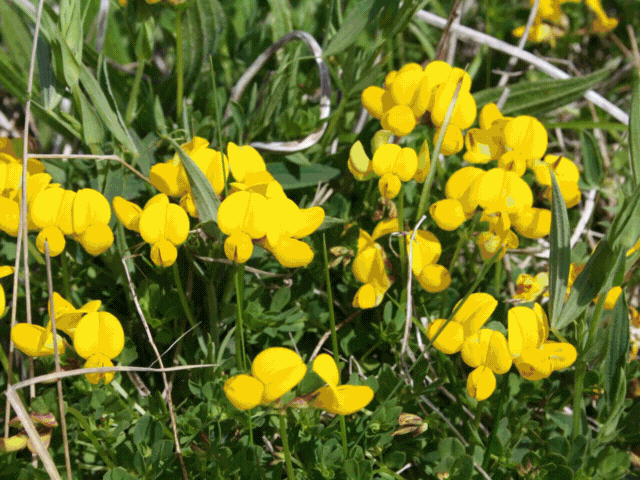 Conservation Verges
Conservation Verges
Orkney’s verges – a habitat highway
Under the Nature Conservation (Scotland) Act 2004, Orkney Islands Council has a duty ‘…. to further the conservation of biodiversity…’
In 2025, the Council adopted a ‘one conservation cut per year’ approach to its roadside verges – with the exception of around 5% or verges which are cut more often for road safety – for example near bends and junctions.
The change directly supports work by Species on the Edge and others to protect against further habitat loss for the endangered Great Yellow Bumblebee. It also supports wildlife in general, including pollinators which are important to farmers and gardeners alike.
Find out more about some of the wildflowers and wildlife you can find in our verges below – put together with the help of the Orkney Field Club and former colleagues Sydney Gauld and Eileen Summers.
Verges – Flowers and wildlife
Primrose - Primula vulgaris
With its clusters of pale yellow blooms above soft, wrinkled leaves, the primrose is one of the first wildflowers to appear in spring time. Flowering between March and June, it is a welcome sight following the dark days of winter.
Red Clover - Trifolium pratence
Red Clover is an important food source for many insect species, attracting butterflies, moths and other long-tonged insects, particularly bumblebees. its leaves also provide food for some micro moths. Like Bird's-foot Trefoil this sweet-smelling and colourful plant has a long flowering season which lasts from May until September.
Ragged Robin - Lychnis flos-cuculi
Ragged Robin is a medium/tall perennial which flowers from May through to August. The narrow 'ragged' red petals appear tattered and give the plant its name. Ragged Robin has barbed stems, with downward pointing hairs that helps it to resist attack by crawling insects such as ants.
Orkney Vole - Microtus arvalis orcadensis
As its name suggests, the Orkney Vole is unique to Orkney and its closest relative is the Common Vole which is found throughout continental Europe. Measuring between 10 and 13cm, and weighing between 30 and 70g, the Orkney Vole is twice the size of the Field Vole found on mainland Britain. With a diet of leaves, stems and roots of a wide variety of plants, Orkney Voles require areas of semi-natural vegetation, such as rough grassland, in order to survive. These small, brown rodents also appear to favour surprisingly wet habitats and can be found in the ditches along roadside verges.
Butterflies
Meadow Brown Maniola jurtina, Green-veined White Pieris napi and Common Blue Polyommatus Icarus can be seen regularly along conservation verges. Meadow Brown larva feeding on fescues (Festuca spp.), bents (Agrostis spp) and meadow-grasses (Poa spp.). Green-veined White larvae feed on Cuckooflower (Cardamine pratensis). And Common Blue butterfly larvae feed on Bird’s-foot-trefoil (Lotus corniculatas).
These lovely butterflies can be seen flying throughout the summer months, Green-veined White have two main flight periods April/May and late July to early September. Meadow Brown late June to early September and Common Blue July/August.
Great Yellow Bumblebee - Bombus distinguendus
The Great Yellow Bumblebee is becoming increasingly rare, probably because of habitat loss to modern agricultural practices, and is found only in Orkney, Shetland, the Hebrides and a tiny populations on the northern coast of mainland Scotland. Its food sources include Red Clover (Trifolium pratense), Knapweed (Centaurea spp.) and Kidney Vetch (Anthyllis vulneraria) and other wildflowers which are found on roadside verges and in lightly grazed areas such as coastal machair.
Other Species
Road verges contain far more species and groups than the few that have been highlighted above, groups such as hoverflies (Syrphidea), spiders (Archnida), flies (Diptera) and bettles (Coleoptera).
Isn’t this just a budget cut dressed up as conservation?
No – while it’s of course true that one cut per year will cost less than two or more cuts would, the decision to move to one cut in the autumn (rather than a cut in the height of May/June) is based on allowing a wider variety of wildflowers to be available as a food source and refuge to a wider range of pollinators and wildlife for more of their breeding seasons – especially the endangered Great Yellow Bumblebee which emerges in summer looking for food and fellow fuzzy companions.





